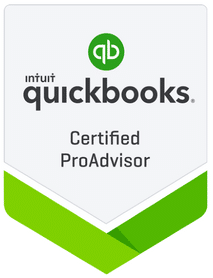- Patrick Roney
- (877) 503-8607
Follow Us :
Follow Us :
Proledge
July 4, 2024
Like other software, QuickBooks needs to be used correctly to guarantee accuracy and efficiency. Regretfully, many users—especially those who are new to the program—commit errors that can cause serious problems later. QuickBooks training can help users maintain correct financial documents, and using them to its fullest extent requires an understanding of these typical errors and how to avoid them. The following list of common mistakes includes prevention advice.

One of the most common mistakes occurs right at the beginning: setting up QuickBooks incorrectly. This foundational error can lead to numerous problems, including inaccurate financial reports and difficulties in managing accounts. Many businesses skip important steps during setup, such as customizing the chart of accounts or correctly configuring opening balances, which can result in a cascade of errors.
Use the QuickBooks setup process or abide by a thorough guide to prevent setup problems. Make sure every pertinent category is covered and tailor the chart of accounts to your particular business requirements. If you’re not confident about the first setup, consider hiring a professional or enrolling in a QuickBooks training course to ensure everything is set up right from the beginning.
Misclassifying transactions is another prevalent issue. This can lead to inaccurate financial statements and tax filings, potentially resulting in penalties or missed deductions. For instance, categorizing a business expense as a personal expense can distort your financial reports and lead to erroneous tax submissions.
Accurate tax calculation implies that you understand the categories and classes in QuickBooks. Regularly review and reconcile accounts to catch any misclassifications early. Use detailed descriptions for transactions and take advantage of QuickBooks’ categorization features to streamline this process. Additionally, consider attending QuickBooks training to deepen your understanding of proper classification.
You can contact us anytime if you have questions or encounter a problem with your bookkeeping program.
A big error is not routinely reconciling your accounts. Reconciliation helps to make sure that your QuickBooks records match your credit card and bank statements by pointing up differences that could be fraud or mistakes. Ignorance of this stage can lead to errors that go unnoticed and jeopardize the security of your financial information.
Set a regular schedule for reconciliation, such as monthly or bi-weekly. Follow the step-by-step reconciliation process provided by QuickBooks or refer to Intuit’s reconciliation guide. Investigate and resolve any discrepancies immediately to maintain accuracy.
Data loss can occur due to system crashes, user errors, or other unforeseen events. Not backing up your QuickBooks data regularly can result in losing important financial information. This oversight can be devastating, especially for businesses relying on detailed financial records.
Use QuickBooks’ built-in backup feature to create regular backups of your data. Store backups in multiple locations, such as an external hard drive and a cloud storage service. Automate backups, if possible, to ensure they occur regularly without manual intervention. For more detailed steps, consider exploring tutorials available on the Intuit QuickBooks website.

Versions of QuickBooks that include bug fixes, security patches, and new features are released often. Ignorance of these upgrades can expose your program to operational problems and security threats. Absence of updates can also mean passing on new features that could improve the efficiency of your bookkeeping.
To guarantee your program is up to date, turn on automatic updates in QuickBooks settings. If automatic updates are disabled, check for and apply updates manually on a regular basis. Follow the official blog or community forums for QuickBooks to get updated on significant changes. By taking this proactive stance, you can maximize QuickBooks’ capabilities while keeping your system safe.
Product-selling companies need to use QuickBooks inventory management. Typical errors that result in disparities are not updating inventory levels on a regular basis or entering inventory data inaccurately. Both overstocking and stockouts brought on by poor inventory management can be detrimental to your bottom line.
Use QuickBooks’ inventory management features to track stock levels accurately. Perform regular physical inventory counts and reconcile them with QuickBooks records to ensure consistency. Ensure accurate data entry for inventory purchases and sales to maintain reliable inventory data. Our inventory management tips offer additional insights on this topic.
QuickBooks helps companies divide and examine financial data using class and location monitoring. Getting thorough insights into many facets of your company may be more difficult if these features are not used. This can result in growth and optimization chances lost.
To properly categorize transactions in QuickBooks, set up classes and places. Track income and expenses by project, department, or place using these tools. For insightful information, routinely go over reports broken down by location and class. Our team has comprehensive experience in solving these features.

Many company owners attempt to do all of their bookkeeping on their own without consulting a professional. This can raise error risk, and optimization chances may be lost. Expert bookkeepers may provide insightful analysis and simplify your accounting procedures.
Do think about getting an accountant to check your setup and procedures. To improve your skills, go to QuickBooks training classes or webinars. Use the community forums and help center provided by QuickBooks.
Avoiding common mistakes in QuickBooks is essential for maintaining accurate financial records and ensuring the success of your business. By correctly setting up the software, properly classifying transactions, regularly reconciling accounts, backing up data, staying updated with the latest software versions, managing inventory accurately, utilizing class and location tracking, and seeking professional help when needed, you can optimize your bookkeeping processes. Investing in proper QuickBooks training and leveraging the software’s full capabilities will help you streamline your financial management and make informed business decisions. For further guidance, you can explore our blog section for detailed articles on bookkeeping and QuickBooks tips. Additionally, useful external resources like guides on common bookkeeping mistakes and other articles on QuickBooks best practices provide valuable insights for optimizing your use. By staying informed and proactive, you can avoid pitfalls and ensure your business’s financial health.


Fill out the form below to sign up to our Blog Newsletter and we’ll drop you a line when new articles come up.

It’s that time again! The tax season is slowly but surely coming to an end and that means you can’t postpone it anymore. You’ve got to figure it out. We

There are lots of businesses that need to find efficient ways to keep track of their finances nowadays, and if you are a business owner, you have experienced this first-hand.

As we all know, automated means of running your business have started to become very popular recently due to all of the perks that it provides. This is not to

So you’re at that point in developing your small business where you’re looking into accounting solutions. If so, you might have started to wonder what’s the best bookkeeping software for

Welcome to bookkeeping 101, the place where we discover how to do bookkeeping effectively, accurately and easily. If you’ve started your small business already or if you’re on the verge

What exactly influences the long-term financial success of American SMEs? Ask 100 business entrepreneurs this question, and you will probably get 100 variations of the same answer. The quality of
Bookkeepers.
Professional. Affordable.
ProLedge is a bookkeeping services firm.
Copyright © 2024 All rights reserved.